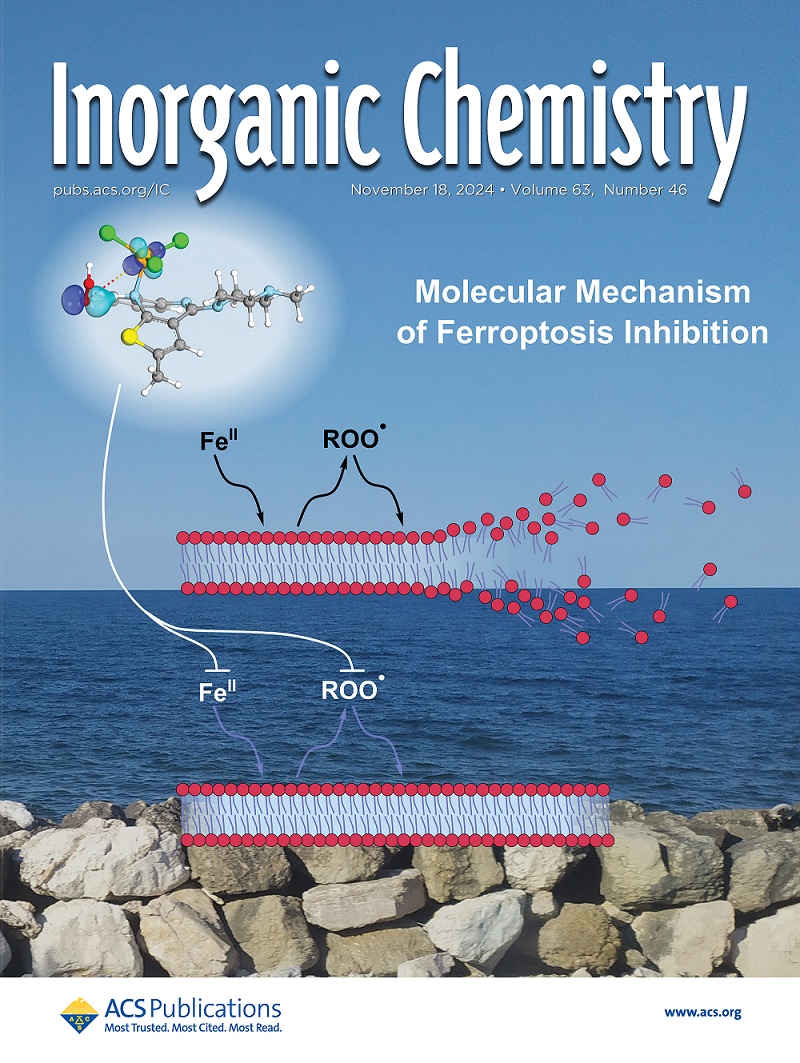2-二苯基膦-苯甲醛与13族路易斯酸的反应。
IF 4.7
2区 化学
Q1 CHEMISTRY, INORGANIC & NUCLEAR
引用次数: 0
摘要
2-二苯基膦苯甲醛1与13组路易斯酸反应生成简单的膦加合物C6H4P(C(O)H)(Ph)2InX3;X = Br 2和I 3。相反,Lewis酸GaCl3, AlCl3, E(C6F5)3 (E = B或Al)和ClAl(C6F5)2影响Lewis酸/膦在羰基上的加成,与八元环产物[(C6H4C(H)(OER3)P(Ph)2)]2 ER3 = Al(C6F5) 34, Al(C6F5)2Cl 5, AlCl3 6,或GaCl3 7或六元环物种(C6H4C(H)(OB(C6F5)3)P(Ph)2(C6H4C(H)(O) P(Ph)2)) 8产生两性离子。这些产物来源于挫折刘易斯对添加到醛片段充分表征和描述,并考虑了不同的反应性。本文章由计算机程序翻译,如有差异,请以英文原文为准。
Reactions of 2-Diphenylphosphino-benzaldehyde with Group 13 Lewis Acids.
2-Diphenylphosphinobenzaldehyde 1 reacts with the group 13 Lewis acids to give simple phosphine adducts C6H4P(C(O)H)(Ph)2InX3; X = Br 2 and I 3. In contrast, the Lewis acids GaCl3, AlCl3, E(C6F5)3 (E = B or Al), and ClAl(C6F5)2 affect Lewis acid/phosphine addition to a carbonyl group, affording zwitterions with either the eight-membered ring products [(C6H4C(H)(OER3)P(Ph)2)]2 ER3 = Al(C6F5)3 4, Al(C6F5)2Cl 5, AlCl3 6, or GaCl3 7 or the six-membered ring species (C6H4C(H)(OB(C6F5)3)P(Ph)2(C6H4C(H)(O) P(Ph)2)) 8. These products derived from the frustrated Lewis pair additions to aldehyde fragments are fully characterized and described, and the differing reactivity is considered.
求助全文
通过发布文献求助,成功后即可免费获取论文全文。
去求助
来源期刊

Inorganic Chemistry
化学-无机化学与核化学
CiteScore
7.60
自引率
13.00%
发文量
1960
审稿时长
1.9 months
期刊介绍:
Inorganic Chemistry publishes fundamental studies in all phases of inorganic chemistry. Coverage includes experimental and theoretical reports on quantitative studies of structure and thermodynamics, kinetics, mechanisms of inorganic reactions, bioinorganic chemistry, and relevant aspects of organometallic chemistry, solid-state phenomena, and chemical bonding theory. Emphasis is placed on the synthesis, structure, thermodynamics, reactivity, spectroscopy, and bonding properties of significant new and known compounds.
 求助内容:
求助内容: 应助结果提醒方式:
应助结果提醒方式:


